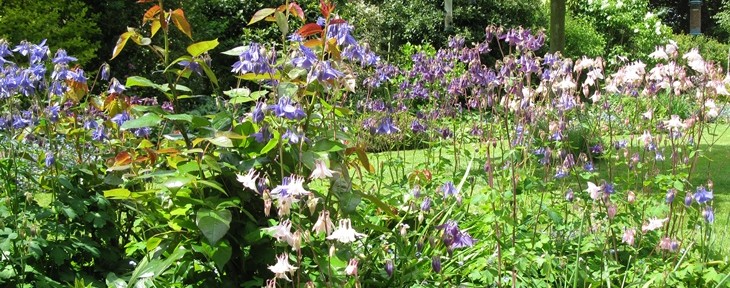Frustrated by a lack of political interest in conservation issues, Dr Adrian Cooper, former Associate Research Fellow in Birkbeck’s Department of Geography, has been developing an innovative and successful approach to community-based conservation in Suffolk.
Felixstowe’s Community Nature Reserve was born out of my frustration with politicians during the 2015 General Election debate. None of them mentioned the catastrophic decline in bee and other wildlife populations. Clearly, local grass roots action was needed.
 I started talking and listening to people from local government and the local community about what might be possible, and gathering a small team of volunteers. Most people understood that wildlife populations in Felixstowe were falling, and they wanted to help, but they simply did not know how. It also became clear that getting hold of a single plot of land for any kind of nature reserve project in the Felixstowe area would take too long, and would be too complicated.
I started talking and listening to people from local government and the local community about what might be possible, and gathering a small team of volunteers. Most people understood that wildlife populations in Felixstowe were falling, and they wanted to help, but they simply did not know how. It also became clear that getting hold of a single plot of land for any kind of nature reserve project in the Felixstowe area would take too long, and would be too complicated.
Participation in this initiative had to be as simple as possible. First, I re-defined what a nature reserve could be. Instead of it being one area of land, I suggested that local gardeners and allotment owners only had to allocate three square yards of their gardens or allotments for wildlife-friendly plants, ponds and insect lodges, and we could then aim for 1,666 people to take part. That combination would give us a total area of 5,000 square yards – the size of a football pitch.
In this way, we are developing a “community nature reserve” composed of many pieces of private land, but between which insects, birds and other wildlife can fly and develop sustainable biodiversity.
Creating our new nature reserve
With my partner Dawn Holden, I started a Facebook page, on which we advise local people about appropriate wildlife-friendly plants. I also wrote articles for our local advertiser magazines and gave an interview to our local community TV station and BBC Radio Suffolk. We were thrilled with the early take-up of our ideas, and at the time of writing, we know that 207 people have bought and planted at least one of the plants we have recommended. But the good news hasn’t stopped there.
Where are we now?
Thanks to Facebook, we’ve had enquiries from people all over the UK, asking about how we set ourselves up, and how the initiative has developed. BBC presenter Chris Packham found out about us, and his tweets to his 145,000 Twitter followers have produced a small avalanche of enquiries about our work and achievements.
In the Leicestershire villages of Cosby and Burbage, people decided to copy our model to develop their own community nature reserves. So now there is the Cosby Community Nature Reserve, and the Burbage Community Nature Reserve. That’s why I wanted to write this blog – to inspire and help other communities to take responsibility for their local conservation in a way that means everyone can get involved. Even window box owners are encouraged to take part – after all, they can grow herbs, crocus, snow drops and much else. So, no one is excluded.
Further action
During the first three months of this year, we’ve recruited lots more volunteers and received some wonderful new ideas, such as the organisation of a plant-swap opportunity, to keep the cost of buying and growing wildlife friendly plants as low as possible.
We’ve also started to work alongside Suffolk Wildlife Trust’s community projects officer to help with their grassroots conservation initiatives and to raise our profile. As a result, this month, April 2016, we hope to help the Trust to raise awareness of falling populations of swifts, and what people can do to help. In September, we plan to help the Trust raise awareness of local hedgehog populations.
Lessons learned
The most important lesson we can offer groups who may wish to start their own community nature reserve is to listen to as many local people as possible. Be patient. Don’t rush on to Facebook until your local community feels comfortable with what you plan to do.
The next lesson is to keep listening, so fresh ideas from the community can be fed into Facebook and other social media as often as possible. We like to use Streetlife.com because it’s a great way to get discussions going among local people who otherwise might not get involved in community engagement.
Finally, we recommend using as many different types of local media as possible to spread the message. We have used Facebook, Streetlife.com, LinkedIn (including multiple LinkedIn posts), local magazines, our community radio and TV station, BBC Radio Suffolk and Twitter. For more information have a look at our Facebook page

